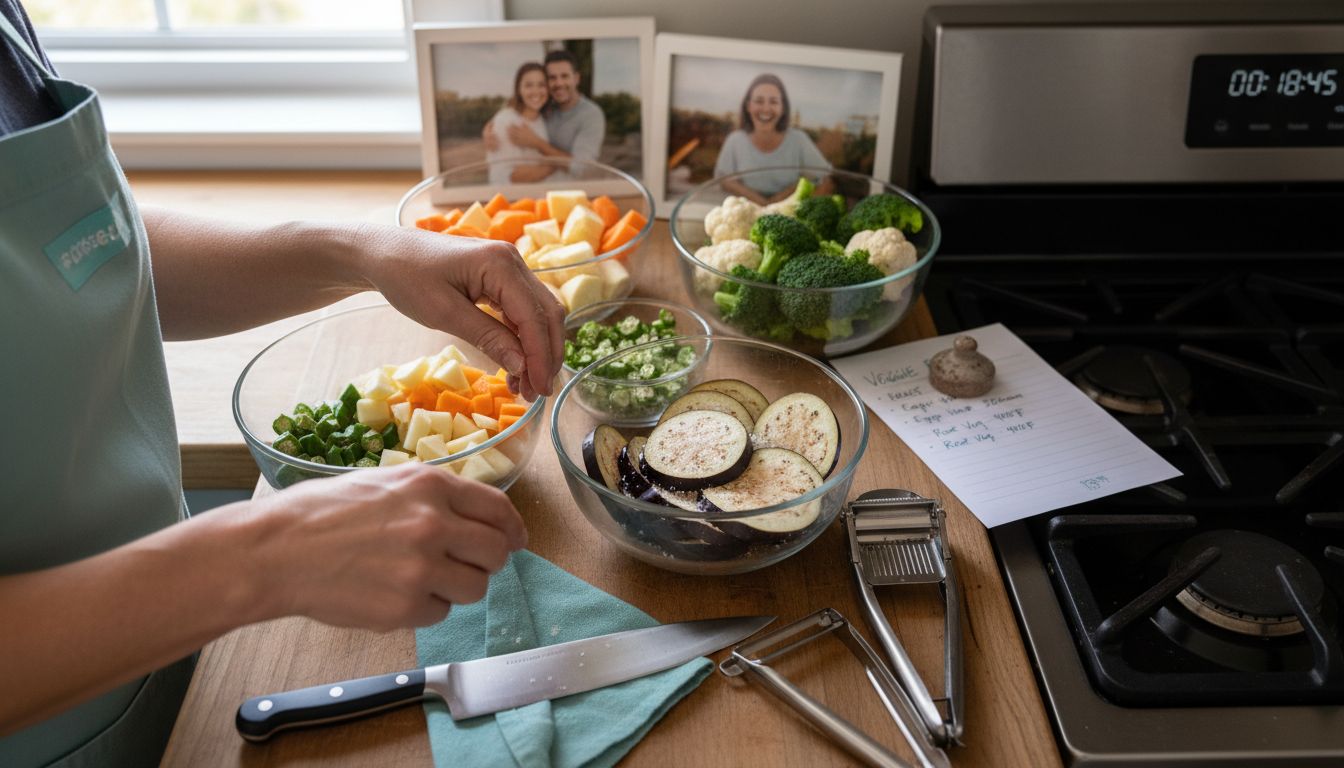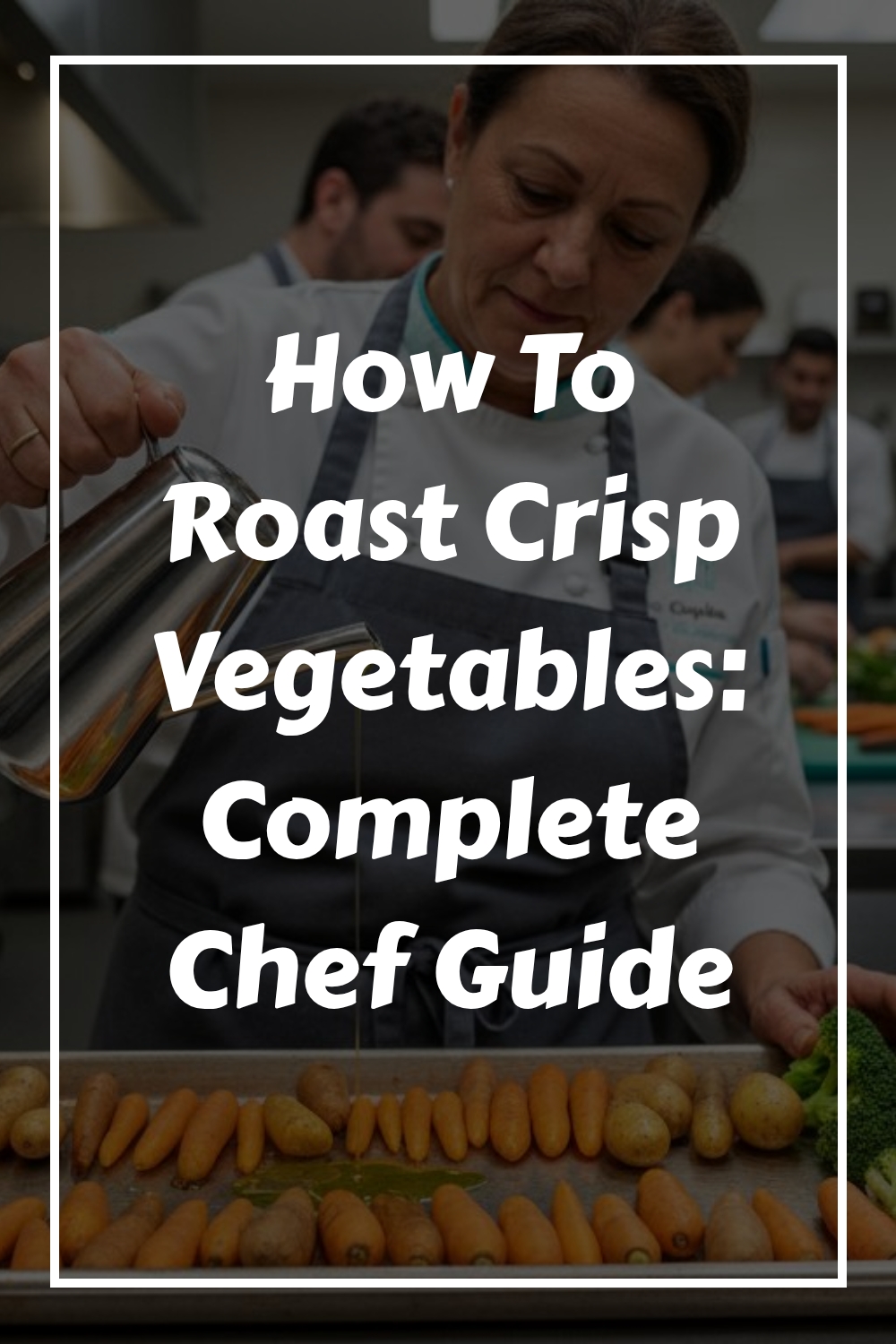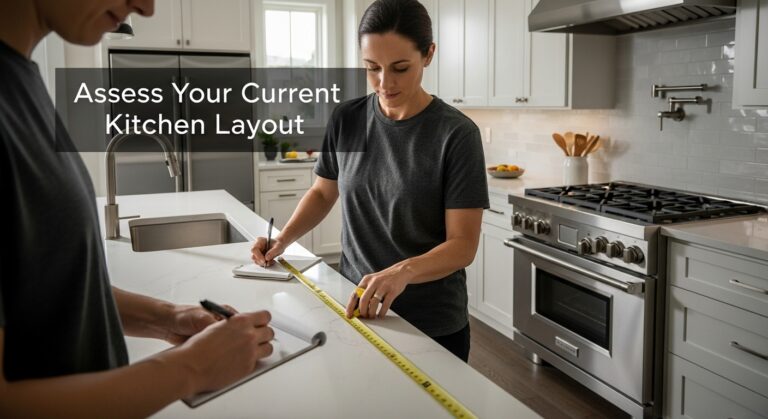How To Roast Crisp Vegetables: Complete Chef Guide
Over 80 percent of home cooks struggle to achieve the perfect crispy bite when roasting vegetables. This common challenge can turn a promising side dish into a soggy disappointment. Discover the key principles and chef-approved techniques that help vegetables transform in both texture and flavor, allowing you to unlock golden edges and deep savory notes every time you roast.
Table of Contents
- Roasting Crisp Vegetables: Fundamental Principles
- Best Vegetables And Their Unique Behaviors
- Essential Chef Techniques And Tools For Crispness
- Oven Temperatures, Placement, And Timing Explained
- Common Mistakes That Lead To Soggy Results
Key Takeaways
| Point | Details |
|---|---|
| High Heat is Essential | Preheat your oven to 425-450°F to maximize caramelization and achieve crispy results. |
| Uniform Vegetable Sizes | Cut vegetables into similar sizes to ensure even roasting and optimal texture. |
| Minimize Overcrowding | Spread vegetables in a single layer to allow proper air circulation and prevent steaming. |
| Avoid Common Mistakes | Address potential pitfalls such as low temperatures and excess moisture to achieve ideal crispness. |
Roasting Crisp Vegetables: Fundamental Principles
Roasting vegetables transforms ordinary produce into crispy, caramelized delights with intense flavor. According to Vegetarian Resource Group, achieving perfect roasted vegetables requires understanding several fundamental principles that elevate your culinary skills.
The Maillard reaction plays a crucial role in creating those delectable brown edges and rich flavors. As explained by the Science of Cooking, this chemical process occurs at high temperatures and is responsible for the complex taste development during roasting. To maximize this reaction, you’ll want to focus on creating the right cooking environment.
Here are the key principles for roasting crisp vegetables:
- Uniform Cutting: Slice vegetables into similar sizes to ensure even cooking
- High Heat: Preheat your oven to 425-450°F for optimal caramelization
- Single Layer Spread: Avoid overcrowding the baking sheet to prevent steaming
- Minimal Oil: Use just enough oil to help vegetables crisp without becoming greasy
- Periodic Turning: Rotate vegetables midway through cooking for balanced browning
Remember, crispy roasted vegetables are all about technique. By understanding these fundamental principles, you’ll transform simple ingredients into restaurant-quality side dishes that are both nutritious and incredibly delicious.
Best Vegetables And Their Unique Behaviors
Not all vegetables roast the same way, and understanding their individual characteristics can help you achieve perfect crispy results every time. According to PETA, some vegetables require special preparation techniques to unlock their maximum roasting potential.
Root vegetables like potatoes, sweet potatoes, and carrots are roasting superstars. As Flavor365 explains, their dense and starchy structures make them ideal candidates for achieving that coveted creamy interior with a crispy exterior. These vegetables caramelize beautifully and can withstand high temperatures without losing their structural integrity.
Here’s a breakdown of unique vegetable roasting behaviors:
- Eggplant: Requires salting to reduce bitterness before roasting
- Okra: Best sliced thinly to enhance crispy texture
- Root Vegetables: Develop creamy interiors with crisp exteriors
- Cruciferous Vegetables: Become wonderfully caramelized and slightly charred
- Squash: Develops rich, sweet flavors when roasted slowly
The secret to successful vegetable roasting is understanding each vegetable’s unique characteristics. By adapting your technique to the specific vegetable, you’ll transform simple ingredients into extraordinary culinary experiences that highlight their natural flavors and textures.

Essential Chef Techniques And Tools For Crispness
Achieving perfectly crisp roasted vegetables requires more than just throwing ingredients in the oven. According to AOL, professional chefs rely on specific techniques and tools to transform ordinary vegetables into crispy culinary masterpieces.
The foundation of crispy roasting starts with proper equipment and preparation. AOL recommends using a sturdy rimmed baking sheet that promotes even heat distribution and maximizes direct contact between vegetables and the cooking surface. Avoid using parchment paper, which can trap moisture and prevent the coveted crispy exterior.
Key chef techniques for achieving maximum crispness include:
- High Temperature Roasting: Cook at 425-450°F for optimal caramelization
- Flat Side Down: Place vegetables with maximum surface area touching the pan
- Minimal Oil Coating: Use just enough oil to help vegetables crisp without becoming greasy
- Single Layer Spacing: Avoid overcrowding to ensure proper air circulation
- Periodic Rotation: Turn vegetables midway through cooking for even browning
Mastering these techniques transforms home cooking from basic to professional-level. By understanding the science behind crispy roasting and implementing these strategic approaches, you’ll elevate your vegetable dishes from ordinary to extraordinary.
Oven Temperatures, Placement, And Timing Explained
Roasting vegetables is a delicate balance of heat, timing, and placement that can make the difference between soggy and spectacular. According to ShunGrill, the key to achieving crispy perfection lies in understanding how oven temperatures interact with vegetable moisture and surface chemistry.
Temperature is the most critical factor in creating crispy roasted vegetables. NumberAnalytics recommends maintaining high heat zones between 428°F to 464°F to promote the Maillard reaction, which creates those delightful brown edges and complex flavors. This temperature range rapidly evaporates surface moisture, preventing steaming and encouraging caramelization.
Here are the essential guidelines for optimal roasting:
- Preheat Thoroughly: Ensure oven reaches full temperature before adding vegetables
- Rack Placement: Use middle or lower rack for consistent heat exposure
- Temperature Range: Maintain 425-450°F for most vegetables
- Avoid Overcrowding: Leave space between vegetable pieces for proper air circulation
- Timing Matters: Typically 25-35 minutes, depending on vegetable density
Mastering oven roasting is about understanding the subtle dance between heat, moisture, and timing. With practice, you’ll transform simple vegetables into crispy, flavor-packed side dishes that elevate any meal.
Common Mistakes That Lead To Soggy Results
Even experienced home cooks can fall into traps that transform potentially crispy vegetables into disappointing, soggy messes. According to AOL, several common mistakes can completely derail your roasting efforts and leave you with lackluster results.
ShunGrill emphasizes that temperature and preparation are critical factors in preventing soggy vegetables. Roasting at low temperatures is one of the primary culprits, as it essentially steams vegetables instead of creating that desirable crispy exterior. Failing to preheat the oven properly means your vegetables start cooking before achieving the high heat necessary for caramelization.
Here are the most common mistakes that lead to soggy vegetable disasters:
- Overcrowding the Pan: Prevents air circulation and traps moisture
- Flipping Too Early: Disrupts the formation of a golden, crispy crust
- Using Low Temperatures: Creates steaming instead of roasting
- Skipping Preheating: Leads to uneven cooking and moisture retention
- Excess Moisture: Not patting vegetables dry before roasting
- Too Much Oil: Creates greasy instead of crispy vegetables
Understanding and avoiding these common pitfalls is the key to transforming your roasted vegetables from disappointing to delectable. With a bit of knowledge and careful technique, you’ll be creating crispy, golden-brown vegetable masterpieces every time.

Transform Your Roasted Vegetables Into Crispy Perfection With Simple Neat Home
Struggling to avoid soggy or greasy roasted vegetables? The challenge lies in mastering high heat roasting, careful oil use, and proper preparation techniques to unlock crispy textures and rich flavors. This guide helps you conquer common pitfalls like overcrowding the pan and uneven cooking so every bite delivers restaurant-quality crispness and caramelization. Whether you want to impress with a flavorful side dish or add texture to your quick dinners, understanding these chef secrets is key.
Ready to elevate your cooking routine? Explore expert tips and easy recipes in our Quick Meals Archives | Simple Neat Home to master fast and tasty roasted vegetable dishes. For entertaining friends or family, check out our Meals for Crowds Archives | Simple Neat Home for crowd-pleasing options that highlight crisp roasted veggies. Take back control of your kitchen and bring calm to your cooking chaos and discover how simple adjustments can make all the difference.
Frequently Asked Questions
How do I achieve crispy roasted vegetables?
To achieve crispy roasted vegetables, focus on slicing them uniformly, roasting at high temperatures (425-450°F), ensuring they are spread in a single layer, using minimal oil, and turning them periodically during cooking to promote even browning.
What are the best vegetables for roasting?
Root vegetables like potatoes, sweet potatoes, and carrots are excellent for roasting due to their dense structure. Cruciferous vegetables, squash, and eggplant can also roast well when prepared properly, unlocking their unique flavors and textures.
Why is preheating the oven important when roasting vegetables?
Preheating the oven is crucial because it ensures that vegetables start cooking at a high temperature, promoting the Maillard reaction that creates a crispy exterior. If the oven is not preheated, vegetables may steam instead of roast, leading to sogginess.
What common mistakes should I avoid when roasting vegetables?
Common mistakes to avoid include overcrowding the pan, using low temperatures, failing to preheat the oven, flipping vegetables too early, and using too much oil. These pitfalls can prevent the formation of a crispy texture and lead to soggy results.
Recommended
- No-Chop Recipes Using Pre-Organized Ingredients | Simple Neat Home
- How to Clean Kitchen: A Simple Step-by-Step Guide | Simple Neat Home
- How to Clean Kitchen: A Simple Step-by-Step Guide | Simple Neat Home







